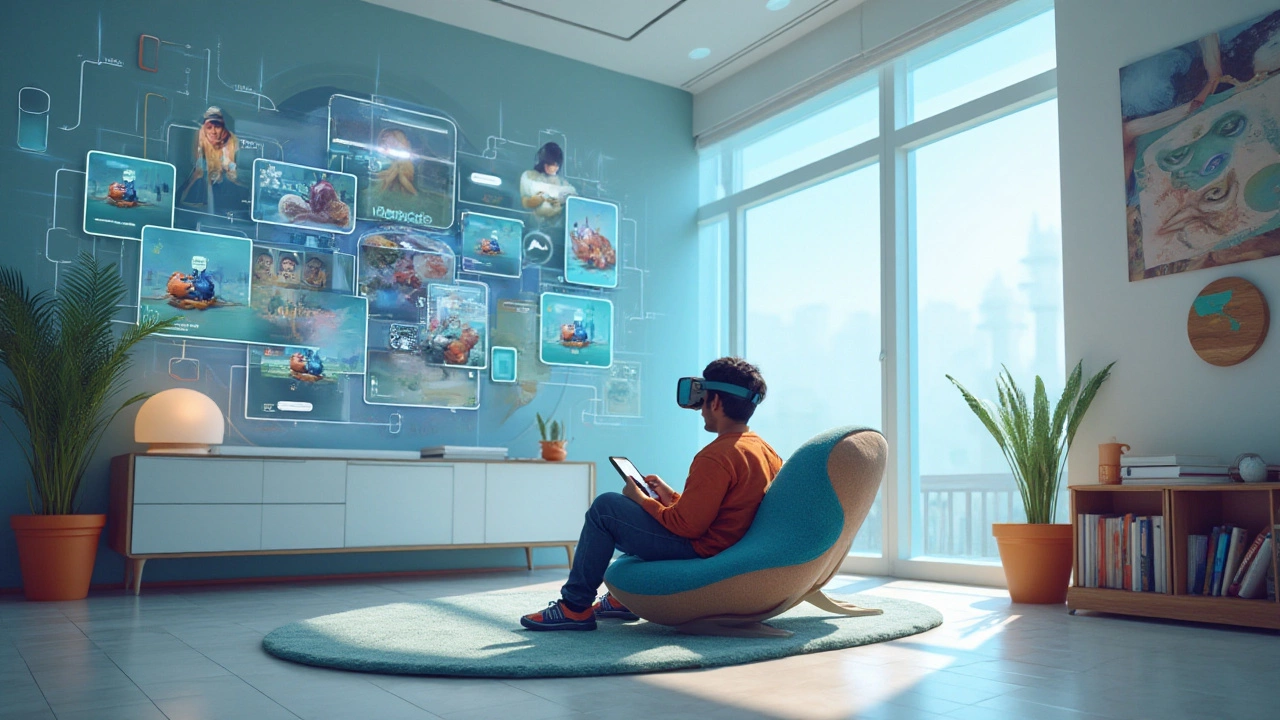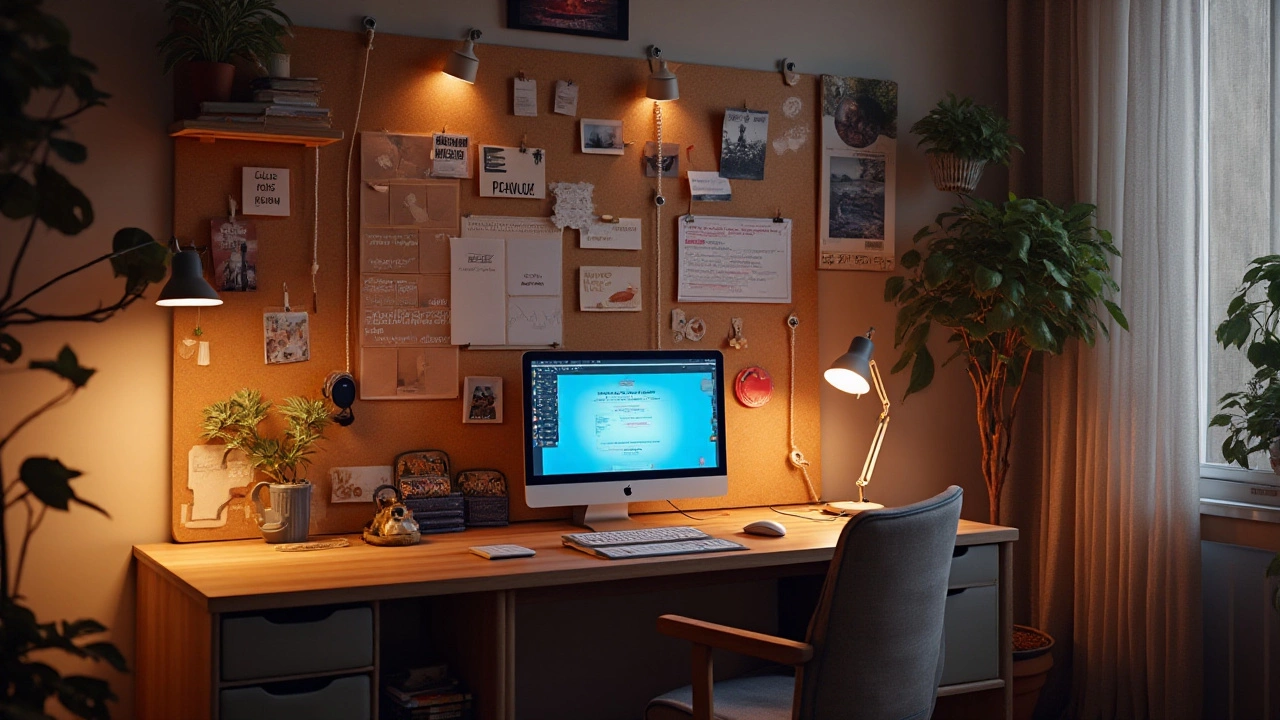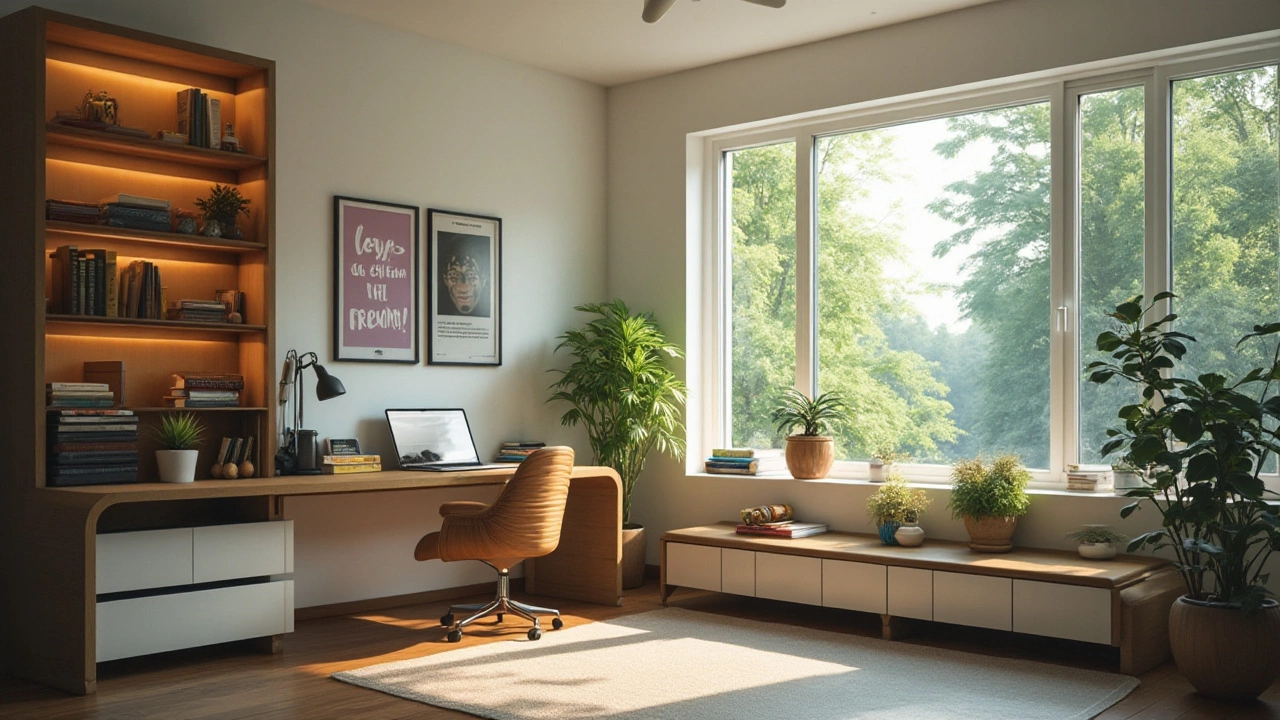Diving into the world of e-learning requires more than just access to a digital platform; a well-thought-out learning station serves as the backbone of an effective study routine. Whether you're a student, a professional, or someone interested in lifelong learning, setting up a dedicated space can markedly improve focus and productivity.
First and foremost, finding the right location is crucial. This should be a spot that minimizes distractions and provides comfort. Next, gathering the necessary equipment like a reliable computer, stable internet connection, and a comfortable chair not only ensures smooth online learning sessions but also minimizes physical strain.
Keeping this space organized with easily accessible materials can prevent interruptions during learning sessions. Moreover, adding personal touches such as motivational quotes or plants can boost your mood and sustain engagement in the material.
Ultimately, your learning station should reflect your personal style and meet your specific educational needs. Aligned with the latest trends and innovations in e-learning tools, this space will be pivotal in turning challenges into achievements.
- Choosing the Right Location
- Essential Equipment and Tools
- Organization and Accessibility
- Personalizing the Learning Space
Choosing the Right Location
Setting up a learning station begins with finding the ideal location. Selecting a spot in your home where you can embrace focus and avoid distractions is crucial for success in e-learning. Ideally, this should be a quiet corner, away from the hustle and bustle of daily activities, be it the kitchen noises or the living room chatter. Natural light is a big plus, as studies have shown it aids concentration and mood, provided you position your screen in a way that avoids glare. A window seat or a corner with a window can be a fantastic option for those who thrive on a bit of the outside world peeking in without the disruption it might bring otherwise.
Another thing to consider is your current home Wi-Fi setup. The chosen spot should be within the reach of a strong internet signal, as interrupted video calls or glitchy uploads can not only be frustrating but hinder the learning process. If moving your station physically close to the router isn’t feasible, investing in a Wi-Fi range extender might prove beneficial. Technical disruptions aside, the learning environment should promote comfort and ergonomics, allowing for both seated and standing positions to mitigate the risks of prolonged sitting. Adjustable desks or a comfortable chair with lumbar support can go a long way in maintaining physical health during those long study hours.
For some learners, external noises are a major barrier. In such cases, consider soundproofing options. Simple additions like a thick rug or heavy curtains can absorb a considerable amount of noise. Noise-cancelling headphones are another great option for creating a more contained sound environment. These are especially useful when you share the space with family members or roommates who might have different schedules and noise tolerance levels.
“The environment is where we all meet; where we all have a mutual interest; it is the one thing all of us share.” – Lady Bird Johnson
Consideration should also be given to the aesthetics of the learning station. Colors like soft blues or greens, known for their calming influence, might be used in decorating the area. Personalizing the space with your favorite inspirational quotes, a plant, or meaningful art can enhance your enjoyment and emotional connection to the space. There’s a balance to be had; while you want it personalized enough to feel ownership, it shouldn’t be too distracting or cluttered for the task at hand.
Finally, the temperature of the room can impact your learning experience. An environment that’s too hot or too cold can seriously affect your concentration. Aim for a moderate temperature that allows you to stay focused and comfortable for extended periods. Taking the time to choose the right location for your learning station may involve some trial and error, but once you find the spot that balances all these elements, it becomes a sanctuary for learning.

Essential Equipment and Tools
When setting up a learning station, the equipment you choose can greatly impact the efficiency and enjoyment of your study sessions. A powerful and reliable computer or laptop is the cornerstone of any effective e-learning setup. Ideally, your device should have a fast processor, ample RAM, and a high-resolution display. It’s quite remarkable how much ease a high-performing device can add to your learning experience, making software run just as smoothly as you learn.
Another essential element is a high-speed internet connection. Nothing disrupts an online class more than buffering videos or dropped connections when you're right in the middle of a thought-provoking lecture. If your location allows, a wired connection might offer more stability than Wi-Fi. Pair this with a good set of noise-canceling headphones to ensure you aren’t distracted by external sounds, a critical aspect of maintaining focus in any learning environment.
"A well-equipped study space can enhance focus and elevate learning outcomes," emphasizes Katherine Newman, education expert and author of 'Learning Spaces for Adult Education'.
Alongside these gadgets, a comfortable ergonomic chair and desk setup can't be neglected. Too often, overlooked comfort leads to unnecessary back and neck pain, which could quite literally weigh down your learning journey. To build an ergonomic-friendly workspace, the chair should support the natural curve of your spine, and the desk should keep your computer screen at eye level. It might sound simple, but these small adjustments can save you from a lot of physical discomfort in the long run.
Software Tools and Applications
Beyond hardware, consider integrating digital tools and apps tailored to your specific learning goals. From organizational tools like Trello and Notion to collaborative platforms such as Slack and Microsoft Teams, there is a host of software designed to meet the dynamic needs of e-learners. Employing the right tools can facilitate better time management and enable seamless communication with peers and instructors alike.
- E-learning Platforms: Websites like Coursera, edX, or Khan Academy offer a treasure trove of courses.
- Virtual Meeting Tools: Utilize Zoom or Google Meet for real-time interactions.
- Note-Taking Apps: Explore OneNote or Evernote to keep your notes organized and accessible.
Investing wisely in these learning station essentials can foster an enriching learning environment. Careful selection not only facilitates efficient learning but also inspires you to engage deeply with the material. Remember, quality investments in your learning setup can transform your educational experience from monotonous to meaningful.

Organization and Accessibility
To truly maximize the potential of a learning station, organization and accessibility stand as pillars of efficiency and success. These elements ensure that every resource is within reach, promoting a smooth and uninterrupted flow of learning. Imagine entering your study zone and knowing exactly where everything is – it not only saves precious time but also reduces stress levels, setting the stage for a productive learning experience.
Begin by evaluating the essential materials and tools you'll need consistently. This might include books, notes, and digital devices. For instance, a well-organized desk layout can enhance focus and ease of access. Investing in organizers, such as drawer dividers or desktop compartments, can make a significant difference. By designating a specific spot for each item, you create a harmonious flow where you know exactly where to turn when you need something, contributing to a more efficient learning process.
"The act of organizing information has an impact on short-term memory storage and retrieval performance," states Dr. Daniel Levitin, an expert in cognitive psychology. - The Organized Mind
Moreover, consider the digital aspect of your e-learning setup. Make sure that all your digital resources are easily accessible on your computer or device. Utilize cloud storage solutions like Google Drive or Dropbox to keep your files neatly organized and readily accessible from any device. This not only helps in preventing data loss but also in keeping your digital workspace clutter-free.
Accessibility doesn't just refer to having resources at hand; it also means optimizing your space to suit your workflow. For example, ensure your seating is ergonomic to avoid strain and focus on minimizing external distractions. Curtains or dividers might help in creating a tranquil atmosphere if you share your living space. By thoughtfully arranging your study space, you enhance your capacity to stay engaged and retain information effectively.
To further illustrate the impact of a well-organized learning environment, consider a study conducted by the University of Minnesota, which found that students who studied in a tidier setting tended to score 20% higher than those in more cluttered environments. Here’s a simple table that compares organized versus cluttered study spaces:
| Environment | Average Score Improvement |
|---|---|
| Organized | 20% |
| Cluttered | 0% |
Finally, personalize your station in a way that makes it uniquely yours. This may involve adding an inspiration board with your goals or positive affirmations, ensuring that your learning station isn’t just a place to work, but a place of inspiration and motivation. By blending both organization and accessibility seamlessly, you'll transform your learning station into a powerful catalyst for achieving your educational ambitions.

Personalizing the Learning Space
When it comes to creating a learning station that's truly effective, personalization plays a key role. This isn't just about making the space look pretty—it's about molding an environment that actively supports your learning goals and enhances your study experience. Consider this: you spend countless hours at your learning station, diving deep into e-learning materials and acquiring new skills. Why not make this space as welcoming and motivating as possible?
Lighting is an underrated yet critical component of a personalized learning space. Natural light not only reduces eye strain but also boosts mood and alertness. However, if you’re a night owl or short on daylight, consider adjustable LED lighting that mimics sunlight. Studies have shown that optimal lighting can improve focus by up to 40%. Equally crucial is noise control. Whether through soundproofing or noise-canceling headphones, controlling auditory distractions can help maintain concentration and significantly enhance the learning process.
Color psychology is another fascinating aspect to explore. Colors can influence emotions and behaviors, making them a powerful tool in personalizing your study space. For instance, blue has been found to boost productivity, while green promotes tranquility. An interesting fact from the University of Texas shows that hues like red can incite emotion and even quicken the heart rate, though they’re not ideal for high-stress tasks.
Organizational tools are indispensable for keeping your learning environment functional. Implementing a labeling system or using clear containers can streamline access to materials, thus saving time and reducing frustration. An organized station promotes a sense of control and readiness, which are assets in navigating complex educational content. Maryanne Wolf from the Center for Dyslexia mentions in her research:
"An orderly space minimizes stress and cognitive overload, allowing the brain to dedicate more resources to creative and learning processes."
Incorporate elements that resonate with your personal interests. Are you fond of nature? Adding plants can not only beautify your space but also improve air quality and potentially enhance creativity. Do you have a passion for music? A small music setup might invoke inspiration or help in memorizing study content through rhythm and melody. Remember, the ultimate goal of personalization is to create an atmosphere where you feel inspired, focused, and genuinely enthusiastic about learning.
If budgets allow, investing in ergonomic furniture is never wasted. An ergonomic chair and a height-adjustable desk can safeguard against potential health issues that arise from prolonged sitting. To sum up, when you take the time to personalize your learning station, you're not just decorating a space—you're crafting a unique environment designed to bolster knowledge retention, engage the senses, and nurture personal growth, turning each learning session into a productive and enjoyable journey.



